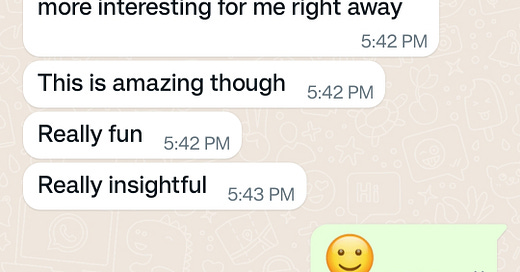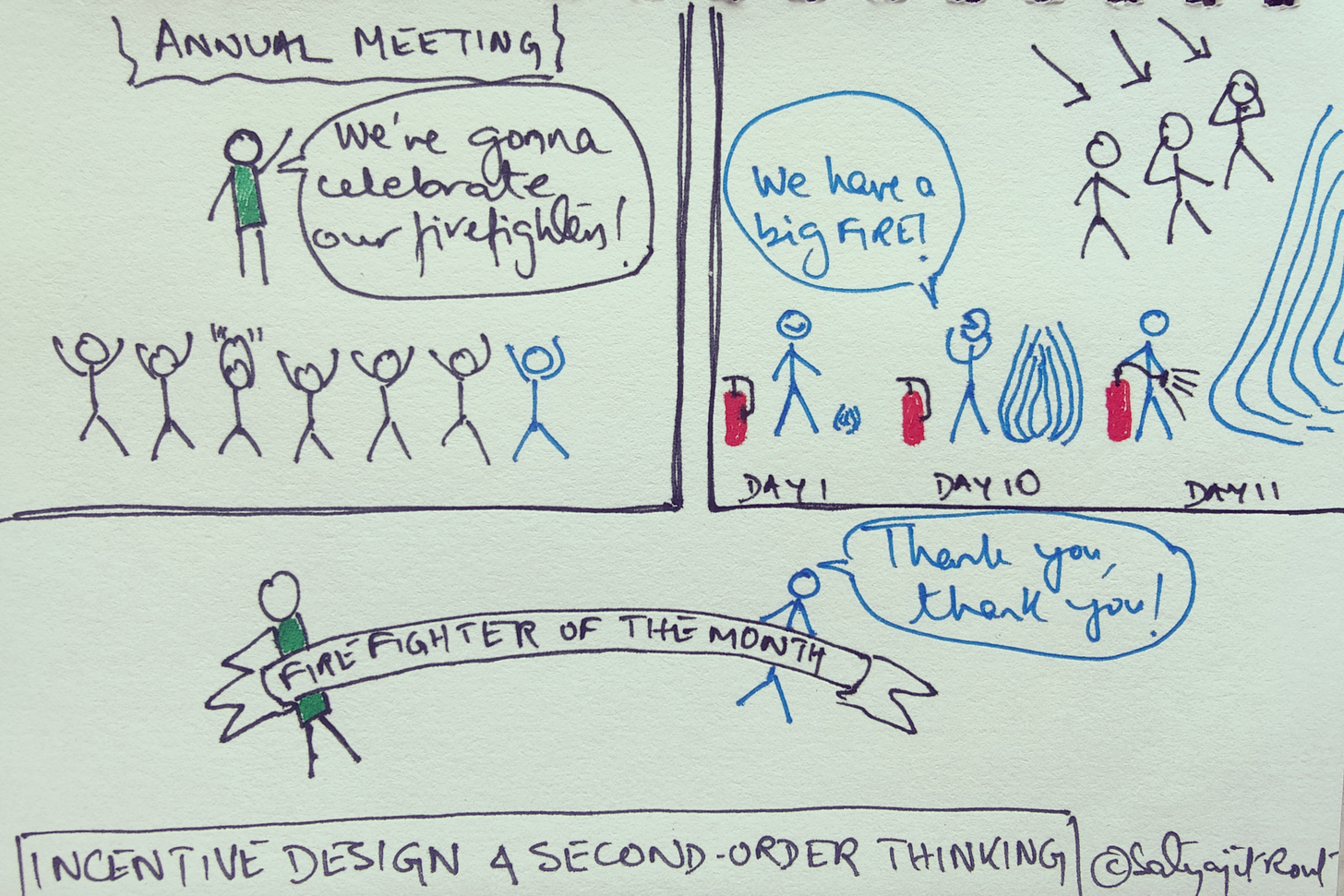#135 - Second-Order Thinking: The Seen and Oh, the Unseen
Part 3 of 3 in series on Visualization Techniques in Decision-Making
A big thank you to all those who downloaded/bought/shared The Middle Manager Playbook 🙏 We’re close to 50 sales in a week and the initial feedback has been positive, here and here below
Please keep spreading the word and show me your love :)
On to this week’s issue and the final part on visualization techniques in decision-making. We’ve covered backcasting and premortems. It’s the turn of second-order thinking now.
How do things go wrong?
Late 19th century. No antibiotics, manual work, modest life expectancy. It was normal for people to live only a few years past their working lives. Imagine that they stopped working at 55 and died at 60. In these twilight years, the retired were supported by their children and grandchildren.
In such a time, some port workers in Bismarck’s Germany came up with an idea. The idea was that when a person stops working they take the last wage of that person and pay half of it as pension. Suppose that the last monthly wage was 100 rupees, so half that wage or 50 rupees a month was paid to the person until they died. This money was contributed to by all active workers. All workers got together and funded the support of a few elderly ex-workers. I say a few because they died relatively quickly after retiring.
This idea gradually became a more formalized system. It came to India as part of the British civil services and through that it came to independent India where civil servants like my father would retire and be supported by this mechanism of benefits, called defined benefit pension. Defined because a pensioner knows exactly how much they’re getting, which is half their wage, until they die.
Let’s fast-forward into the second half of the 20th century.
With a better end-of-life financial situation, the retiring worker did not lose sleep about being provided for. That was a huge relief and that showed itself in a change in the family structure in the formal sector. The would-be pensioners didn’t need the sanctuary of multiple children who would take care of them in their old age. Contrast this with those in the informal sector and the poor, who continued having more children as an investment that would take care of them in old age.
With advances in medical science, longevity exploded. Being unemployed after retirement wasn’t a 5-year problem anymore. It became a 10, 20-year problem. Who paid for this burgeoning band of yesterday’s employees? Today’s employees.
Now step into the 21st century.
In 2003, the net present value of the pension promises made to just retired civil servants in India – only 3 percent of the population – was 68 percent of India’s GDP. This became the size of the burden on the Indian state.
Twenty years further, the Indian state today is looking at a massive pensions crisis.
Why do things go wrong?
Pretty much everything consequential that we do has two kinds of effects: the first order of effects that is near, intended, and seen; and the second order that is far, unintended, and often unseen.
Let’s talk about that second order.
😨Have you noticed when things go wrong with well-intentioned and seemingly well-thought-out decisions? Like the minute an organization makes a new rule, people will change their behavior such that they get the most out of the rule.
🔺The CEO sets a cap for spends. People will start spending more, even when they may not need to, just to make the most of the cap.
🔺She sets a bonus structure for sales based on accounts won. People will sell what is easiest.
Every action has a reaction.
Most don’t account for it. We think of life as a game of darts. Keep throwing and adding to our score. That’s not accurate. We’re in a game of tennis. Life returns your serve.
How to foresee unintended consequences?
💡Second-order thinking drills thinking in interactions into you. For every action, it makes you ask ‘and then what?’ What opportunities and problems will emerge?
Here’s a step-wise approach I learned from the Decision by Design course from Farnam Street.
For every decision you’re considering,
1️⃣Write down each possible option or path you could take with your decision. You can put down one option per post-it.
2️⃣For each option -- first look at the immediate short-term results (you figure out what short term means for your decision)
3️⃣Look in the long term. Go through the option again and try to answer “and then what?” both in terms of everything going well or going poorly.
4️⃣Ask: what information do I need to work out if it’s more likely to go well or go poorly?
5️⃣Do #2-4 for all options, one by one. Now you have a list of things you need to find out and evaluate your position.
By persistently asking ‘and then what?’ and exploring both the positive and negative potential outcomes of each choice, you’ll eventually run into an information shortage. Reaching this point is the best thing for you. Why?
Because you now know what information you need to gather to cut down uncertainty. It prompts action. Instead of freaking out, you get clear in the head on your next steps. The best decision-makers work to put themselves in this situation and then they exploit it. They know exactly what experiments to run, what questions to ask to further refine their choices and confidently pick a course of action.
I hope you liked the visualization series. It’s perhaps one of the more actionable segments in the stuff I put out.
Let’s try something. If you’re sitting with an important decision and you want to think through all the consequences, especially the unintended ones, tell me about it and I’ll help you with second-order thinking. You can connect with me on social or here. Or write to me at satyajit@satyajitrout.com.
🔬A fantastic deep dive into India’s massive pensions crisis.
📚A great book to understand public policy as a non-economist
See you Tuesday in the mid-week issue.





